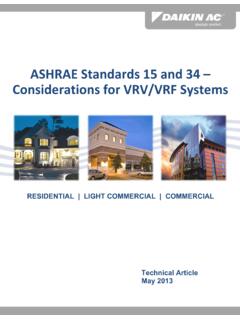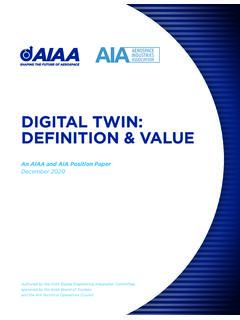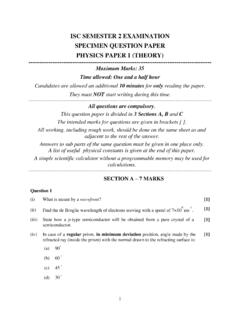Transcription of Identification of Variables Affecting Employee ...
1 IOSR Journal of Business and Management (IOSR-JBM). ISSN: 2278-487X. Volume 5, Issue 1 (Sep-Oct. 2012), PP 32-39. Identification of Variables Affecting Employee satisfaction and Their Impact on the Organization 1. Alam Sageer, 2Dr. Sameena Rafat, 3Ms. Puja Agarwal 1. (Department of Management, CMJ University, Shillong India). 2. (Department of Management, IIPM, Lucknow India). 3. (Department of Management, Wisdom School of Management). Abstract: Employee satisfaction is the terminology used to describe whether employees are happy, contended and fulfilling their desires and needs at work. Many measures support that Employee satisfaction is a factor in Employee motivation, Employee goal achievement and positive Employee morale in the work place. Basically Employee satisfaction is a measure of how happy workers are with their job and working environment. In this paper various Variables responsible for Employee satisfaction has been discussed such as Organization development factors, Job security factors, Work task factors, Policies of compensation and benefit factor and opportunities which give satisfaction to employees such as Promotion and career development also has been described.
2 This paper also deals the various ways by which one can improve Employee satisfaction . Keywords: satisfaction , Employee satisfaction , Importance of Employee satisfaction I. Introduction: According to Nancy C. Morse (1997) satisfaction refers to the level of fulfillment of one s needs, wants and desire. satisfaction depends basically upon what an individual wants from the world, and what he gets. Employee satisfaction is a measure of how happy workers are with their job and working environment. It is sure that there may be many factors Affecting the organizational effectiveness and one of them is the Employee satisfaction . Effective organizations should have a culture that encourages the Employee satisfaction , Bhatti & Qureshi, (2007). Employees are more loyal and productive when they are satisfied Hunter & Tietyen, (1997), and these satisfied employees affect the customer satisfaction and organizational productivity, Potterfield, (1999).
3 There is no limit for the employees to reach the full satisfaction and it may vary from Employee to Employee . Sometimes they need to change their behaviors in order to execute their duties more effectively to gain greater job satisfaction , Miller, (2006). Having good relationships with the colleagues, high salary, good working conditions, training and education opportunities, career developments or any other benefits may be related with the increasing of Employee satisfaction Employee satisfaction is the terminology used to describe whether employees are happy, contended and fulfilling their desires and needs at work. Many measures support that Employee satisfaction is a factor in Employee motivation, Employee goal achievement and positive Employee morale in the work place. Susan M. Heath field ( ). Cranny, Smith & stone (1992) defined ES as the combination of affective reactions to the differential perceptions of what he/she wants to receive compared with he/she actually receives.
4 According to Moyes, Shao & Newsome (2008) the Employee satisfaction may be described as how pleased an Employee is with his or her position of employment. As Spector (1997) defined job satisfaction as all the feelings that a given individual has about his/her job and its various aspects. Employee satisfaction is a comprehensive term that comprises job satisfaction of employees and their satisfaction overall with companies policies, company environment etc. II. Need for Employee satisfaction Everyone from managers, retention agents to HR need to get a handle on Employee loyalty and satisfaction how committed is the workforce to the organization and if workers are really contented with the way of things for gauging their likelihood to stay with the company. One of the main aspects of Human Resource Management is the measurement of Employee satisfaction . Companies have to make sure that Employee satisfaction is high among the workers, which is a precondition for increasing productivity, responsiveness, and quality and customer service.
5 The litmus test is to study turnover and average length of service. If turnover is on the rise, loyalty levels are low and vice versa. Comparing them to industry averages gives good idea of attrition probabilities. Staff attendance, compliance with policies and confidence in leadership are other indirect indicators of allegiance while excessive theft and sabotage spell obvious lack of commitment. According to Heskett et al (1994), more satisfied employees, stimulate a chain of positive actions which end in an improved company 32 | Page Identification of Variables Affecting Employee satisfaction and Their Impact on the Organization performance. In another research it is said that Employee satisfaction influenced Employee productivity, absenteeism and retention, Derek R. Allen & Merris Wilburn, (2002). The success of any company is directly link to the satisfaction of the employees who embody that company, that retaining talented people is critical to the success of any organization, Freeman, (2005).
6 Studies shows that businesses that excel in Employee satisfaction issues reduce turnover by 50% from the norms, increase customer satisfaction to an average of 95 %. & lower labor cost by 12%., Carpitella, (2003). The more satisfied an Employee is, the less turnover and absenteeism occurs, Maloney, & McFillen, (1986). Judge, et. al, (1993), on the other hand, mentions that Employee satisfaction is positively correlated with motivation, job involvement, organizational citizenship behavior, organizational commitment, life satisfaction , mental health, and job performance, and negatively related to absenteeism, turnover, and perceived stress and identify it as the degree to which a person feels satisfied by his/her job. In contrast, Rousseau (1978) identified three components of Employee satisfaction : they are characteristics of the organization, job task factors, and personal characteristics. In the construction industry, where the quality of products is dependent on the skill of laborers and on- site supervisors, employees play a significant role in the success and outcome of the product and the company.
7 ( Bureau of Labor Statistics, 2004). Profit and growth are stimulated directly (and primarily) by customer loyalty. Customer loyalty is a direct consequence of customer satisfaction . Customer satisfaction is heavily influenced by customer perceptions of the value of services they receive. Value is created by satisfied, loyal and productive employees. Employees who feel a sense of teamwork and common purpose, a strong commitment to communication, and managerial empowerment are most able, and willing, to deliver the results that customers expect ( Employee satisfaction , 2005). Human Relations perspective posits that satisfied workers are productive workers ( , Likert, 1961;. McGregor, 1960). Thus, organizational productivity and efficiency is achieved through Employee satisfaction and attention to employees physical as well as socio emotional needs. Human relations researchers further argue that Employee satisfaction sentiments are best achieved through maintaining a positive social organizational environment, such as by providing autonomy, participation, and mutual trust (Likert, 1961).
8 Employees job satisfaction sentiments are important because they can determine collaborative effort. Consistent with this reasoning, Likert (1961) has argued that collaborative effort directed towards the organization s goals is necessary for achievement of organizational objectives, with unhappy employees failing to participate (effectively) in such efforts. In a unique study conducted by Harter et al. (2002), based on 7,939 business units in 36 organizations, the researchers found positive and substantive correlations between Employee satisfaction -engagement and the business unit outcomes of productivity, profit, Employee turnover, Employee accidents, and customer satisfaction . The predominant view has focused on the situational context ( , supervisory support) as a cause of satisfaction and has argued that high-performance work practices and thus a positive working climate foster Employee satisfaction (see, , Bowen, & Ostroff, 2004; Wright, Dunford, & Snell, 2001; Wright, Gardner, Moynihan, & Allen, 2005).
9 Keen observation of Employee reactions and conduct is by far the most obvious and easiest technique. Casually walk around the office, watching employees working, interacting with each other and talk to them informally. Are they smiling, energized, cooperative and alert or listless, inactive and unhelpful? You can even employ a professional consultant as an objective third-party to assess the work atmosphere and compare with other companies. Taking simple observation to the next level by asking employees outright in attitude surveys, focus groups and exit interviews and analyzing the results to determine staff attitude, opinions and motivation. While satisfied employees are not necessarily loyal or loyal ones always satisfied, it cannot be denied that job satisfaction fuels loyalty. After all its been rightly said that, the more satisfied an Employee is regarding his or her working conditions, the more likely is he or she to develop a psychological attachment or commitment to the organization.
10 According to Mark graham Brown, (2006), there is a strong link between Employee satisfaction and customer satisfaction and between customer satisfaction and future revenue. Companies should try their best to evaluate why employees leave or what kindles their dissatisfaction. Examine the root causes where does the problem lie? Is it earnings or benefits? Does it have something to do with job quality or workplace support? Or is lack of appreciation or growth to blame. The onus is on the management to keep employees engaged and happy, so as to persuade them to stay. In fact, this is critical to organizational success. III. Variables on which Employee satisfaction Depends: Through review of literature, we can classify the Variables in mainly 2 broad categories namely:- 1. Organizational Variables 2. Personal Variables 33 | Page Identification of Variables Affecting Employee satisfaction and Their Impact on the Organization 1.


















